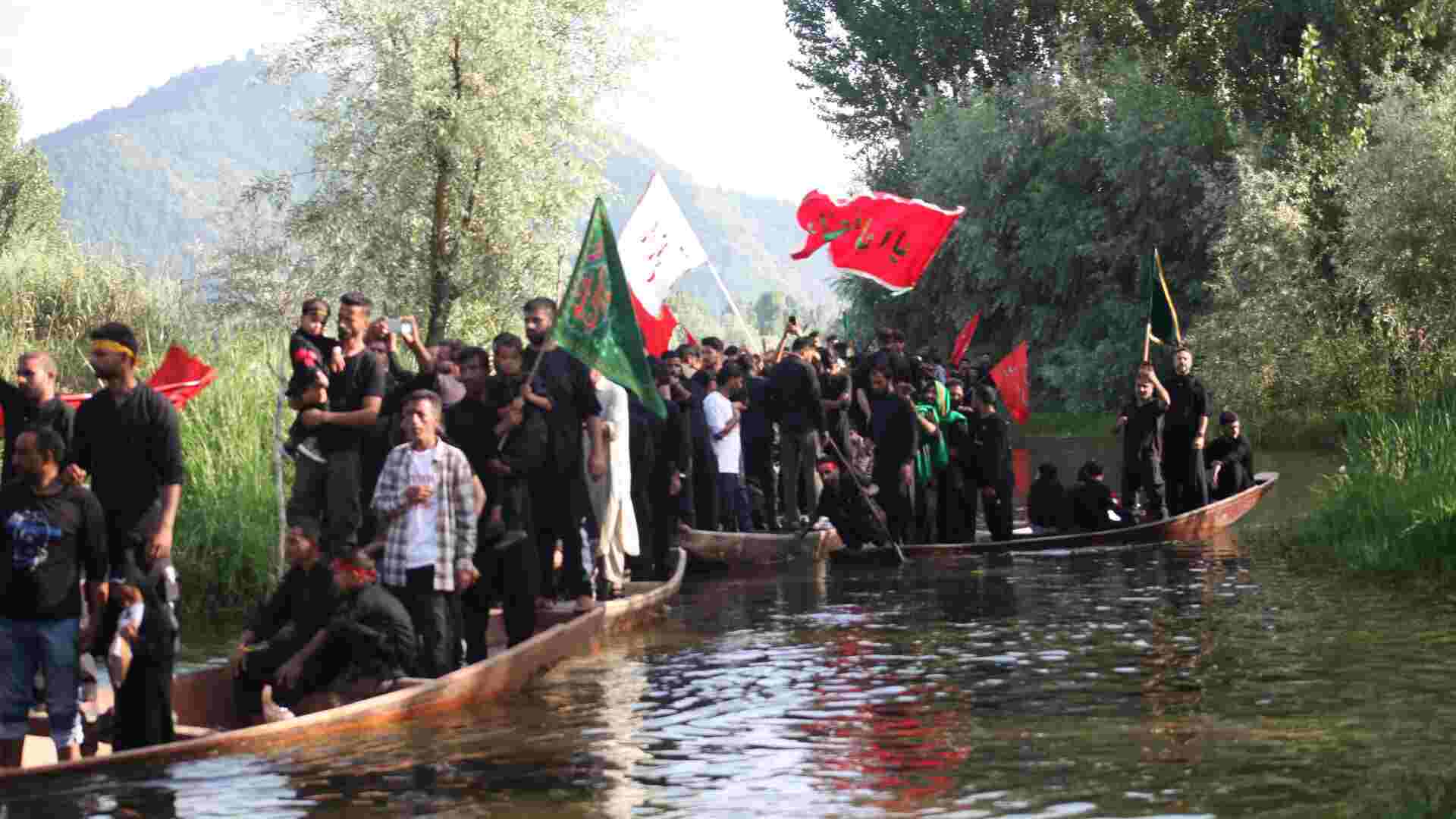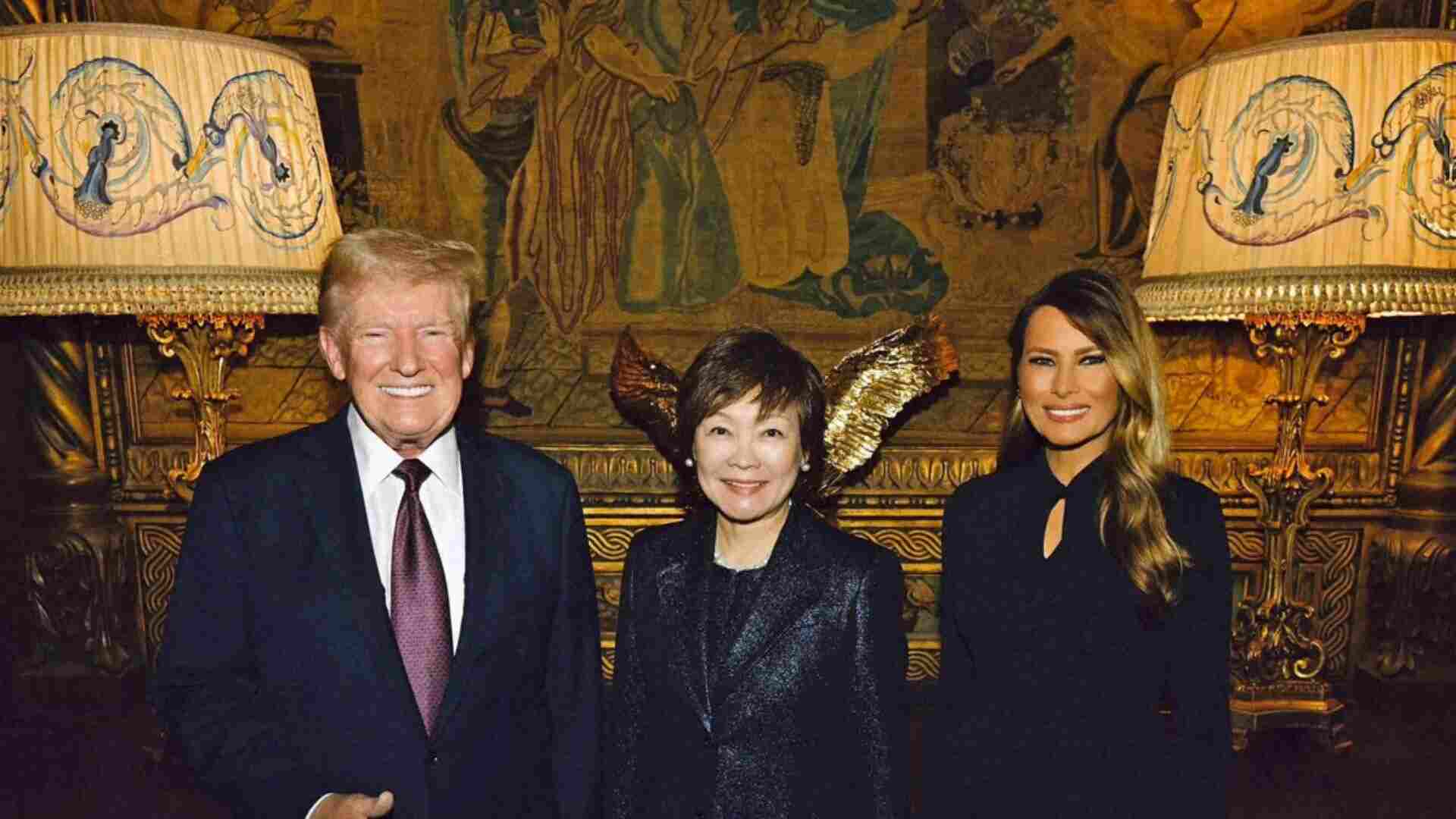Kashmir: In a striking display of devotion, scores of Shia Muslims from across the Kashmir Valley participated in a Muharram procession on Dal Lake, traveling from Rainawari to Kaenkech on the 9th of Muharram. The mourners gathered in Sand Mohalla, Rainawari, and navigated from one neighborhood to another in shikaras, eventually reaching Hasanabad Imam Bargarh, where the unique Shikara rally concluded.
Amid chants and nohas dedicated to Imam Hussain (AS), the mourners expressed gratitude to the administration for permitting the 8th Muharram procession after three decades. “It is a traditional rally, and I have participated in it for more than fifteen years,” said one of the participants, highlighting its long-standing significance.
The ambiance of the procession was both somber and momentous, reflecting the gravity of the occasion. The traditional mourning ritual, known as Matam, symbolizes deep devotion and recounts the tragic events of Karbala over 1340 years ago.
Idress Abbas, a local mourner who has coordinated the Muharram procession for the past two decades, spoke to The Daily Guardian about the importance of the event. “The Muharram procession is not just a religious event; it’s an integral part of our cultural identity,” Abbas explained. “It symbolizes unity, compassion, and empathy. We mourn the tragedy of Karbala not just for the sake of it but to understand the sacrifice Imam Hussein made for justice and righteousness.”
The significance of Muharram stems from the Battle of Karbala, where Hazrat Hussain ibn e Ali (RA), the grandson of the Prophet, and his companions were martyred by a larger force sent by Ubaid-Ullah-Ibni-Ziyad on the orders of Umayyad ruler Yazid. Hazrat Hussain’s tomb, built two centuries later, is located in Karbala, and Shia Muslims consider pilgrimage to the tomb a divine blessing.
Most mourning rituals occur in the first ten days of Muharram, culminating on the tenth day, though related gatherings continue throughout the month. The processions in Kashmir are without challenges now since abrogration of Article 370 and 35, officials implementing security measures to ensure safety. Street closures are a common practice to manage crowds and prevent any incidents.
As the sun sets, the procession concludes at various Imambaras across Kashmir, where meals are served, reflecting a sign of brotherhood. In a region that has witnessed turmoil for generations, Muharram stands as a beacon of faith and unity among the valley’s natives.
Men, women, and children holding flags and beating their chests in memory of Imam Hussain were a poignant sight. The alleys of Dal Lake reverberated with emotions as chants and elegies filled the air. The serene waters mirrored the collective grief of the community, symbolizing sorrow that transcends time.
The Shia community’s commemoration of Imam Hussein and his companions showcases resilience and devotion, touching millions globally. As Muharram ends and the new lunar year begins, the teachings of Karbala continue to inspire sacrifice, compassion, and faith in adversity.







